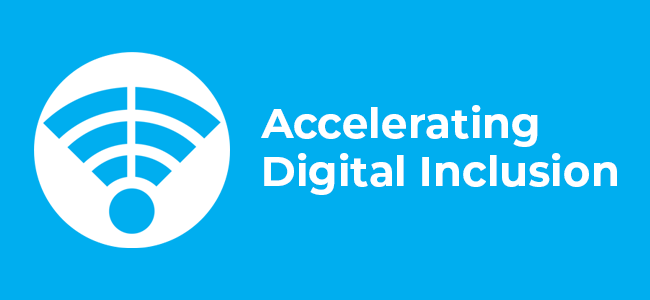Older adults and families caught in the digital divide face a public health crisis, with restricted ability to stay healthy, meaningfully engaged or financially secure amid the COVID-19 pandemic and beyond. Experiencing the digital divide can mean not knowing how to access online portals, not having access to a smartphone or laptop or not having a trusted resource for help navigating technology, especially for older people who have low digital literacy or experience language access barriers. While the pandemic unleashed historic investments by the federal government in expanding broadband infrastructure investments and opportunities for greater digital equity efforts, we must ensure older adults are part of this work.
- Access. The costs associated with broadband subscriptions, which are out of reach for millions of Americans of limited economic means, present the greatest challenge to expanding digital accessibility and adoption rates in multifamily affordable rental housing.
- Adoption. There is a lack of private and public support for digital literacy programs that are age-inclusive, that teach basic technical skills, are culturally competent and build capacity for community-based organizations and their staff.
- Content. Curricula need to include all the ways in which one can adopt and use technology—not just how to use Microsoft Word, but also how to navigate social media, fintech, telehealth, federal and state benefits and other life-saving resources. The curricula should also include scam and fraud prevention training, as cybercrimes against older adults have increased fivefold since 2014, costing more than $650 million in losses per year.
Continue to Invest in Age-inclusive Programming
- Support greater investments in broadband infrastructure and subscriptions, including intentional investments and grants by the federal government in historically marginalized communities, federally supported housing and rural areas.
- Create voucher and grant programs for low-income individuals for the purchase of a connected device (i.e., a desktop, laptop or tablet computer) for which the appropriate federal agency shall reimburse the retailer.
- Invest in state and localities to support expanding digital inclusion programs in public libraries, senior centers and congregate meal sites.
Include Older Adults at the Table
- Ensure federal agencies responsible for overseeing and influencing digital inclusion issues, such as the FCC, FTC, CFPB and NTIA, consider the needs of older adults by including age in diversity, equity and inclusion (DEI) efforts and adding representatives of the aging field to advisory boards.
- Collaborate with existing private-sector efforts to ensure older adults play an active role in defining problems and devising solutions.
Reform Government Regulations and Policy
- Assess the availability and outcomes of expanded telehealth services under Medicare and Medicaid during the pandemic and make effective telehealth coverage permanent.
- Create digital inclusion and literacy requirements for all federal programs promoting volunteerism, workforce training or education that targets older adults, as well as multigenerational efforts such as AmeriCorps and in the departments of Labor and Education.
- Improve and expand federal regulation that strengthens rules and policies to prevent and prosecute internet and cyber scams targeting older adults.


